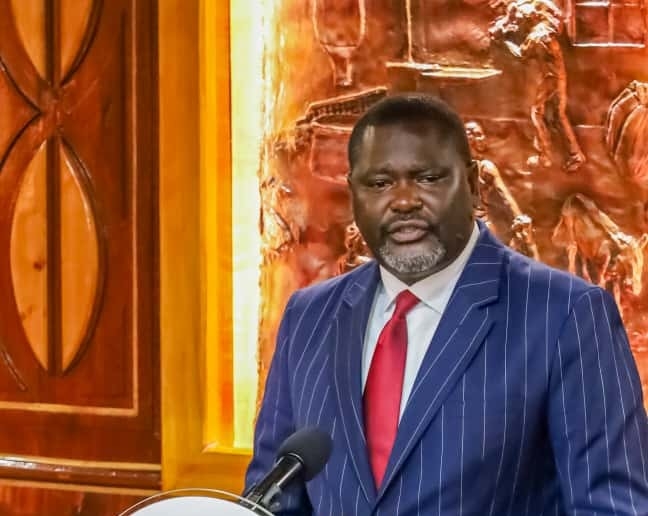Nuclear technology was always double-edged. Initially applied as a weapon of mass destruction it was later developed to serve as a source of abundant and cheap energy.
The two sides of the technology were always carefully differentiated by responsible state players and international organizations, and nuclear arsenal, taking into account its catastrophic annihilation potential, was framed within containment policies.
The situation has drastically changed with unprovoked and unjustified Russian aggression against Ukraine in February 2022.
Russia has openly used its nuclear status and permanent membership in the UN Security Council as a justification of putting itself above international law and order.
Top Russian politicians and propagandists made numerous statements bragging about Russian resolve to use its nuclear club, despite the fact that Ukraine has voluntarily dismantled world 3rd biggest nuclear arsenal in exchange of the security guarantees under the 1994 Budapest Memorandum. Russia was one of the signatories of this document.
Strangely enough Russian escapades were overlaid with some quasi-religious overtones, as president Putin infamously claimed that in the event of nuclear war Russians ‘as martyrs, will go to heaven, while they [enemies] will just die’. On October 18, 2023 Patriarch Kirill, the head of the Russian Orthodox Church, claimed that Russia’s nuclear weapon was created by ‘divine providence’.
The novel Russian strategy included occupation of Ukrainian nuclear objects and using them as a military shield.
In February 2022, Russian forces invaded northern Ukraine through the territory of Chornobyl nuclear power station (NPP) – place of the worst nuclear catastrophe in the history of mankind, and used it as a military base until forced withdrawal on March 31, 2022.
The largest in Europe Zaporizhzhia NPP has been under Russian occupation since March 3, 2022. Aggressors resorted to repression and harassment against Ukrainian personnel, including abductions, torturing and forcing them to join Russian Rosatom.
The same Rosatom still positions itself globally as a reliable partner aimed at providing its services to the developing countries, including those in Africa, in spite of the fact that the UN’s nuclear watchdog – International Atomic and Energy Agency's (IAEA) has passed numerous resolutions unequivocally calling Russia to immediately cease all actions at nuclear facilities in Ukraine and withdraw its military and other personnel from the Zaporizhzhia NPP.
In September 2022 IAEA Director General Rafael Grossi said that situation on the plant ‘is untenable, and we are playing with fire… the safety of Zaporizhzhya NPP is hanging by a thread.”
On September 29, 2023 during the 67th session of the IAEA General Conference, 69 countries supported the resolution on immediate return of the Zaporizhzhia NPP under the full control of Ukraine.
But Russia seems unfazed, disregarding all the demands of the international community and risking potential nuclear catastrophe, which if happens, might be times more disastrous than Chornobyl. Its serious negative implications might be experienced even by countries as far as North Africa.
The threat of Russian sabotage or terror attacks against Ukrainian nuclear facilities is not merely hypothetical.
In clear violation of international humanitarian law, Russian military planners demonstrated that civilian energy infrastructure is their priority target.
It was proved by massive missiles and drones attacks last winter against Ukrainian energy networks, as well as by blowing Kakhovka hydroelectric plant and dam on June 6, 2023, which caused disastrous ecological consequences.
Negative repercussions of this horrendous barbaric act have not been fully accounted yet.
Both yielding nuclear club and weaponizing civil nuclear energy represent new Russian catatonic ‘out of hell’ doctrine.
Until Russia abides to IAEA’s decisions and vacates Zaporizhzhia NPP it should be ousted from the international nuclear energy market. Sanctions on Rosatom must be imposed.
Today’s world is in the process of energy transition. Many experts consider atomic power applied responsibly as part of green energy solution.
In 2020 26% of world’s low-carbon energy was produced from nuclear source. In Ukraine, nuclear power contributes around 50% to the total energy mix.
But this power could not be considered safe until all the security risks are mitigated, including those stemming from its weaponization. It’s not about technology, but about the way it is controlled. Stricter international regime seems to be the only solution.
We praise the Republic of Kenya for supporting Ukrainian candidature to the IAEA Board of Governors at the election held in September 2023.
As Kenya is aimed at launching its own atomic program, Ukraine is open for responsible partnership both on multilateral and bilateral levels.
The writer is Ukrainian Ambassador to Kenya
















